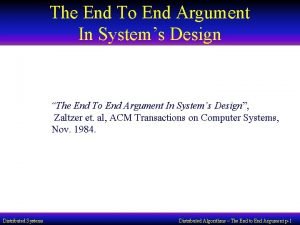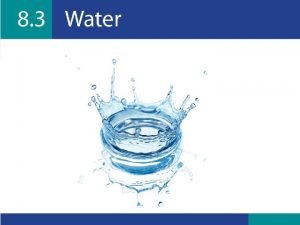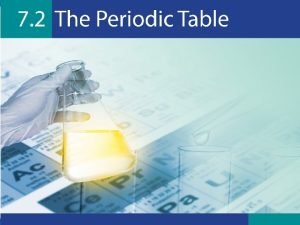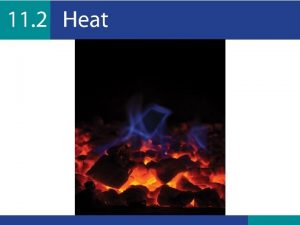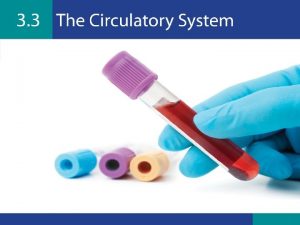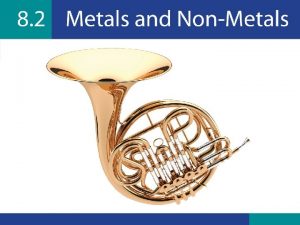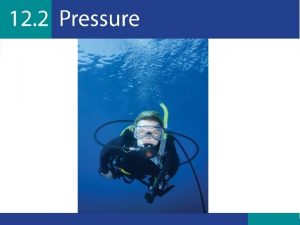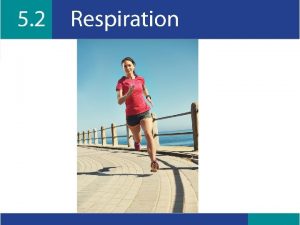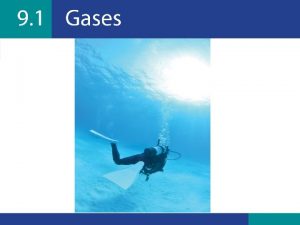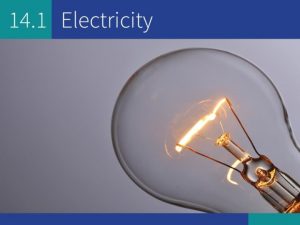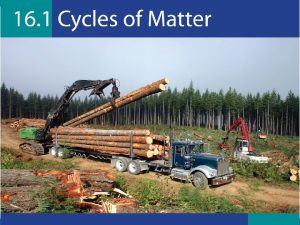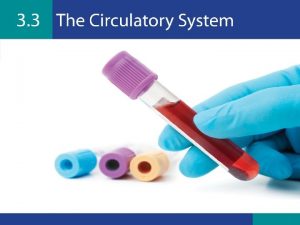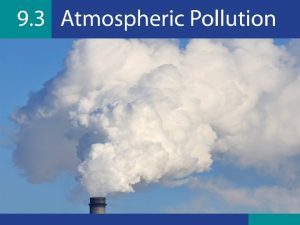At the end of this unit you should






























































- Slides: 62


At the end of this unit you should: 1. Be able to explain why scientists classify matter into different states. 2. Be able to describe the differences between solids, liquids, gases and plasma (the states of matter). 3. Know the differences between physical changes and chemical changes. 4. Be able to explain the changes involved in freezing, boiling, melting, evaporation and condensation.

boiling mass Brownian Motion matter chemical change particles compressed physical change condensation plasma evaporation properties flow solid freezing state of matter gases Law of Conservation of Mass liquids

Matter: Anything that takes up space and has mass. Mass: The amount of matter in a substance, given in grams (g) or kilograms (kg). Particle: An extremely small piece of matter.

Physical Change: When a substance changes its state, texture, strength or colour, but does not form a new substance. Chemical Change: When two or more substances combine to form a new substance.

LIGHTBULB QUESTION H 2 O in various states. A physical not chemical change. Ice snow. Mist and clouds are water vapour (from evaporation of surface of bodies of water and later condensation). Steam is hot vapour from boiling of all molecules in an amount of water.

DEMONSTRATION Demonstration 06. 01 – Making a cloud in a bottle Equipment: A 2 -litre soft drinks bottle – preferably non-contour for greater flexibility, water (tepid works better), a match.

DEMONSTRATION Instructions: 1. Pour about 30 ml of warm (tepid) water into a 2 litre soft drinks bottle. Screw on the cap. 2. To saturate the air inside the bottle, shake the bottle vigorously for 30– 40 seconds. 3. Unscrew the cap. 4. Light a match and allow it to burn enough to create a significant amount of smoke. 5. Drop it into the bottle, and quickly screw the cap back on the bottle. 6. Do not shake the bottle again at any point. 7. Squeeze the bottle as tightly as possible for five seconds. 8. Release the squeeze in one sharp movement. 9. A cloud will condense in the bottle, which will become denser each time the bottle is squeezed and released.

1. Were the substances that made up the cloud destroyed each time the cloud disappeared? 2. Were the substances that made up the cloud created each time the cloud appeared? In both instances, no, because no new substances are created. Water simply changes state from vapour (gas) to liquid because pressure and temperature both increase and then drop suddenly.

Change The smell of vinegar from chips Stirring sugar into coffee The fragrance from a scented candle The smoke from a burning match The bursting of a beach ball left in the sun The creation of sawdust from sanding a piece of wood Rust on an iron fence Bleaching hair to change its colour The drying out of a puddle of water Dissolving jelly granules to make a dessert A fizzy drink going flat Rain falling from a cloud Physical Chemical

Law of Conservation of Mass: Matter can be neither created nor destroyed but is rather converted from one form to another.

Investigation 06. 01: Finding the physical and chemical changes when steel wool is burned Equipment: Using the equipment as shown in Fig. 06. 01. 03, burn a piece of steel wool.

Instructions 1. Cut a strip of aluminium foil that will cover the first 8 cm of one end of the metre stick and wrap it around the metre stick at least four times. This protects the metre stick from scorching. 2. Cut two flaps in the side of the foil cup and bend these around the foil end of the metre stick. This creates a cradle which will hold the steel wool in place. 3. As threads of steel wool can pierce the skin, gloves should be worn when handling it. A scissors can be used to cut suitable pieces from the packaged roll. 4. Cut approximately 4 g of steel wool and place in the foil cup. 5. Place some plasticine/Blu-tac on the other end of the metre stick and balance on the triangular block. 6. The metre stick does not need to be in perfect balance, i. e. level. If imbalanced, a tilt to the Blu-tac end is better.

Instructions 7. To stop scorching of the surface beneath, a heat tile should be placed under the steel wool. 8. Using a wooden splint, the steel wool should light easily and remain burning once dry. If it does not light, or burns out before the metal has fully combusted, tease the wool apart to allow more air to pass through it. This is similar to setting kindling for a fire. 9. You should not be too close to the burning steel wool as small sparks containing molten metal can occasionally lift up from the ball of steel wool. 10. After burning, the steel wool should be handled with tongs until cool. 11. Iron oxide coats the steel wool so it cannot be reused, as not enough reactive steel would still be exposed. However, the foil strip and foil cup can be recycled, if desired.

1. You might think that you cannot burn steel with a standard flame. How is it possible to burn steel wool? It is possible because the steel is in a fine thread mesh and there is a large surface area for reaction. Also because of a low mass in each thread, little heat energy is needed to begin combustion. 2. To make the steel wool burn, how do you need to arrange it in the foil cup? The mesh of the steel wool needs to be teased apart to allow sufficient air (oxygen) around each thread for combustion to occur.

3. How much steel wool should you use? Can you use too much or too little? The exact (or a precisely measured) amount of steel wool is irrelevant once there is enough to show a mass change after combustion and cause the metre stick to tilt to the foil cup end.

4. Could you conduct this experiment without using aluminium foil or the foil cup? Yes. The steel wool could simply be wrapped around the end of the metre stick, but wrapping can pull the steel wool too tightly together and it will not burn well enough. More importantly, the metre stick will scorch badly or burn. An 8 cm-deep strip of foil wrapping prevents this damage. The foil cup holds the steel wool in place during burning and collects the debris from its combustion.

5. When burning any substance, safety precautions need to be taken. What precautions are needed for this particular investigation? Goggles, gloves, lab coat and tongs. Care needs to be taken when using scissors.

6. When the steel wool was burned, what physical change took place? Give a reason for your answer. 7. When the steel wool was burned, what chemical change took place? Give a reason for your answer. Use the ‘Physical and Chemical Changes’ chart to assess the results of this investigation and draw evidence-based conclusions.

8. Do the results of this investigation agree with the Law of Conservation of Mass? Justify your answer. Yes, because if matter was destroyed then it could not combine with other substances so iron oxide would not form on the surface of the steel wool and its overall mass would not increase.

Property: The particular features of a substance or object that make it similar or different to other substances or objects.

Solid: A substance that has a definite shape and volume, cannot be compressed, cannot flow. State of Matter Solids Properties Definite mass Definite volume Definite shape Cannot be compressed Cannot flow Arrangement of Particles arranged in a regular pattern, packed closely together. They vibrate slightly.

Liquid: A substance that does not have a definite shape, has a definite volume, can be compressed and can flow. State of Matter Liquids Properties Definite mass Definite volume No definite shape Can be compressed slightly Can flow Arrangement of Particles are not arranged in any pattern, packed closely together. They collide and glide across each other.

Gas: A substance that does not have a definite shape or volume, can be compressed and can flow. State of Matter Gases Properties Definite mass No definite volume No definite shape Can be compressed Can flow Arrangement of Particles not arranged in any pattern, randomly colliding and causing each other to move in other directions.

Plasma: A substance that does not have a definite shape or volume, can be compressed and can flow; also conducts electricity. State of Matter Plasma Properties Definite mass No definite volume No definite shape Can be compressed Can flow Conduct electricity Arrangement of Particles Arranged the same as a gas but can conduct electricity and create magnetic fields.

Melting: The change of state from solid to liquid, which happens at the melting point temperature (m. p. ). Boiling/Evaporation: The change of state from liquid to gas, which happens at the boiling point temperature (b. p. ).

Condensation: The change of state from gas to liquid. Freezing: The change of state from liquid to solid.


DEMONSTRATION Demonstration 06. 01. 02 – The three-in-one states of matter Instructions: Your teacher will put 4– 5 cm depth of hot water into a jam jar, and then sit a zip-lock bag of ice in the neck of the jar, as per the diagram.

DEMONSTRATION Instructions: 1. To prevent too much heat energy being lost to the glass walls of the container, some previously boiled water could be added to the jam jar to a depth of 4– 5 cm and left for five minutes. This may be clamped to a retort stand as a precaution against accidental spillage and scalds. 2. Alternatively, the container could have been warmed in a lab oven at approximately 400 C, which also means it is safe for handling. 3. Place approximately twelve ice-cubes in a zip-lock bag and seal. 4. Empty the jam jar and refill with boiled water to a depth of 4– 5 cm.

DEMONSTRATION Instructions: 5. Lay the zip-lock bag across the neck of the jam jar so that it sits just inside the neck without falling into the jar. This will provide a temporary seal. 6. After a few minutes, condensation will appear in the underside of the bag, proving that water vapour (gas) inside the jar has condensed. 7. To show that all three states of H 2 O are present, small amount of anhydrous copper sulfate gas can be shaken into the boiled water, ice and onto the condensation to show a colour change. At this point the only explanation needed for the anhydrous copper sulfate is that it changes from white to blue only in the presence of H 2 O.

1. There are three states of matter present in this demonstration. Explain how this is true. H 2 O is the chemical present in each of the substances tested. Ice and boiling water have an obvious difference in temperature. Water vapour (steam) condenses on the outside of the ice-filled zip -lock bag, showing that a change in temperature is enough to effect a change in the state of matter.

2. Did any chemical or physical changes take place during the demonstration? Justify your answer. Condensation on the outside of the zip-lock bag tested the same as the boiled water and ice. This shows that the change from steam to water was physical and not chemical because no new substance was created.

(a) Using simple diagrams, explain how a bar of chocolate left on a hot windowsill will melt. Answers should include: • Bar of chocolate exposed to sunlight from a window • Before and after version • Suitable labels • Brief explanation that the Sun radiates/releases heat and light energy • Chocolate has a low melting point

(b) Ice-cubes were added to a glass of orange cordial. After ten minutes ice-cubes had disappeared, a fog had appeared on the outside of the glass and the drink tasted watered-down. Explain how this happened. The temperature of the orange cordial (Kia Ora, Ribena, etc. ) was higher than the ice-cubes’ temperature. This caused them to melt as heat moved from the cordial into the ice-cubes causing them to change state. Overall the temperature in the drink and then the glass dropped. This was cool enough to condense the water vapour in the air near the glass, causing droplets to form. As time goes on the droplets will evaporate as the heat energy from the environment warms the glass and the drink.

Compression: Forcing the particles of a substance closer together and reducing the amount of space they take up. Kinetic energy: Energy possessed by a body because of its motion.

Investigation 06. 01. 02: Testing the compression of solids, liquids and gases Equipment: Using a disposable syringe, water, a marshmallow and the air in the room, can you suggest how you could show the compression of a solid, a liquid and a gas. You may need to add other equipment to this list.

Instructions: 1. Draw out the plunger of an empty, dry 20 ml syringe to its maximum. 2. The extended syringe should be placed between the thumb and index finger of your writing hand (strongest). 3. You should now try to squeeze the plunger home. The plunger should be against the thumb which makes squeezing easier. This should be repeated at least twice. 4. Drawing 15 ml of water into the syringe, the same method should be repeated.

Instructions: 5. Using a small amount of Blu-tac, the tip of the 50 ml syringe should be sealed. 6. The plunger should be removed from the barrel of the syringe. A marshmallow should be placed at the bottom of the barrel, and the plunger replaced. 7. Placing the tip of the syringe against a smooth, flat surface, push the plunger home until the marshmallow stops reducing in size. The plunger should then be drawn out until the marshmallow regains its original size.

1. Explain whether the changes you see are physical or chemical, and why the changes happen. • Compressing air increases internal pressure by forcing molecules closer together. The friction caused by this creates heat energy. The reduction in volume is a physical change, as no new substance is created. • Compressing water results in no change. • Compressing the marshmallow initially compresses the air inside the marshmallow reducing it in volume. This is a physical change. No new substance is formed. But once the air is compressed the marshmallow will not reduce further in volume as it is a solid and incompressible.

2. How might you measure these changes? The gradations on the syringe can be used to find volume measurement. 3. Can you explain what might happen if you put a piece of marshmallow into a sealed syringe and push the plunger down? What might happen if you drew the plunger out? The marshmallow changes volume as the gas within it is compressed and decompressed.

Diffusion: The movement of particles in a liquid or gas until the particles are evenly spread throughout the liquid or gas.

Investigation 06. 01. 03: Looking at diffusion in a liquid Equipment : Cold water, boiled water, black ink (or cordial, food colouring etc. ), Pasteur pipette, two beakers (or tall drinking glasses, glass or colourless plastic bottles). Instructions: 1. Fill a beaker with 500 ml of tap water. 2. Fill a second beaker with 500 ml of boiled water. 3. Using a Pasteur pipette, add a drop of black ink to each beaker. 4. Note what you observe happening in each beaker.

1. Do your observations prove that diffusion happens? Justify your answer. If you have waited until the colour of the solute is even throughout the mixture, then diffusion will have been proven.

2. Suggest factors that could speed up or slow down the diffusion in your investigation. Explain your answer. • Temperature of the solvent (or solute). • Volume of the solvent (or solute). • Solvent density – higher density slows diffusion. • Solute mass – higher mass molecules move more slowly. • Distance solute must travel through the solvent.

3. Explain how you could test one of these factors in a fair investigation. Remember that you test for one factor while keeping the others fixed. In addition to controlling factors, you need to consider how you will take measurements and ensure the validity of these measurements, e. g. if testing the same volume of solvent at different temperatures by measuring how long diffusion takes, is a mean calculation made from multiple (repeated) trials?

DEMONSTRATION Demonstration 06. 01. 03 – Observing gas diffusion in a tube Diagram

DEMONSTRATION Instructions 1. Select two corks (rubber bungs) that will fit the end of the diffusion tube. 2. Clamp the tube securely into the retort stand place inside an operating fume hut. 3. Take one cotton ball and place over the neck of the concentrated ammonia reagent bottle. Invert the bottle several times until the cotton ball is soaked. 4. Place the cotton ball in one end of the tube and stopper this end. 5. Repeat this procedure with hydrochloric acid. 6. The mounted diffusion tube may now be removed from the fume hut and placed where students will be able to see it clearly (against a dark background is preferable). 7. As a precaution even when using a fume hut, ensure that the lab is well-ventilated.

DEMONSTRATION Instructions 8. The diffusion tube should only be dismantled in an operating fume hut. The cotton balls should be thoroughly rinsed with water before disposal. 9. The diffusion tube and corks should be cleaned with hot, soapy water to prevent a build-up of ammonium chloride reside. These should be suitable for re-use if cared for.

1. What change do you observe happening at position X? A white, smoky ring or cloud should appear. 2. What has happened to the substances soaked onto the cotton wool that allows this change to happen? Both liquids have evaporated.

3. Justify whether you think this was a chemical or physical change. The white cloud shows that a new substance was formed as the liquids used to soak the cotton buds are colourless. Also the cloud leaves a residue on the inside of the tube. 4. Suggest a reason why the change you observe does not happen in the middle of the tube. The liquids do not evaporate or diffuse at the same rate. The ammonium diffuses faster so travels further along the tube before reacting with the hydrochloric acid.

(a) Name three examples of diffusion from your everyday life. • Body odour in a room • Smell of cooking/perfume/deodorant/scented candles/smoke throughout the house • Smell of wood/turf fires • Exhaust fumes from combustion engines

(b) Are all the statements below about diffusion? Decide which are and which are not. Statement True Spreading butter evenly on a slice of bread Tea spreading through hot water when making a cup of tea Adding orange squash to water The smell of scented candles Cigarette smoke filling a room Slurry spreading on crops* Food particles passing from a mother to a baby in the womb Breathing anaesthetic gases just before an operation False *Slurry spreading is not diffusion – the odour from it, however, is an example of diffusion.

Copy and Complete In this unit I learned that substances can be classified into states of matter. In gases the particles collide and change direction all the time. Because the particles move so much they fill the container that the gas is in. The particles in liquids glide over each other. Liquids take the shape of the container they are in. Solids cannot flow because the particles in them are packed tightly.

Copy and Complete Because the particles in gases and solids are not as close together they can be compressed. When one substance spreads evenly through another this is called diffusion. I also learned that in a physical change no new substance is created. Condensation is when substances change state from gas to liquid and freezing is when they change from liquid to solid. When the temperature increases the reverse changes of state are called boiling/evaporation and melting.

Questions 1. Table 06. 01. 03 shows the three states of matter. Identify which diagram shows the arrangement of particles in a liquid and which shows the arrangement of particles in a gas? Diagram Z shows the arrangement of particles in a liquid. Diagram Y shows the arrangement of particles in a gas.

2. Fig. 06. 01. 05 shows the arrangement of particles in two states of matter as they are heated. Which diagram, P or Q, shows melting and which shows boiling? Diagram Q shows melting and diagram P shows boiling.

3. Name a state of matter that has no fixed shape. Liquids, gases and plasma all have no fixed shape.

4. Name a state of matter that has no fixed volume. Gases and plasma both have no fixed volume.

5. Gas cylinders and deodorants are stored away from sources of heat to prevent them from exploding, even if the gas inside the cylinder is not flammable. Do you think this is a sensible precaution? Give reasons for your judgement. Yes. Heat energy gives energy to the particles of a gas to move. This means that the particles move faster and collide more strongly against the walls of their container. If they collide strongly enough, this can cause the container to explode. Storing gas containers in cool places helps prevent this.

6. State one physical change and one chemical change that takes place in this demonstration shown in Fig. 06. 01. 06. What evidence would you pick to show that a chemical change has happened? When the concentrated liquid hydrochloric acid vaporises this is a physical change. The same happens with the concentrated ammonium. Both of these substances have no colour but when they react to form a new substance, ammonium chloride, this is a chemical change. The formation of a white cloud inside the tube shows this happening.

7. When the windows of a car get fogged up on a cold morning, gas has changed to liquid. What word would you use to summarise this change of state? Can you think of reasons why this change happens? Suggest a source for the gas and a useful property of the gas. Condensation is the name for a change from gas to liquid when cooling. It happens on a cold morning as the occupants of a car breathe out warm air containing water vapour. When the water vapour makes contact with the cold windows of the car, condensation happens. The fact that this condensation happens so easily suggests that this could be a convenient way to collect water, without having to cool to very low temperatures, unlike other vapours.
 When being passed you should
When being passed you should Empty space between traffic clusters
Empty space between traffic clusters List eight types of facial cosmetics and how they are used
List eight types of facial cosmetics and how they are used What is stroke volume
What is stroke volume End diastolic volume meaning
End diastolic volume meaning Compiler front end and back end
Compiler front end and back end Difference between front end and back end of compiler
Difference between front end and back end of compiler Kolondivertikulose definition
Kolondivertikulose definition Yichao zhou
Yichao zhou End to end argument
End to end argument End to end accounting life cycle tasks
End to end accounting life cycle tasks Protect
Protect End to end delay
End to end delay End to end
End to end End-to-end construction of nlp knowledge graph
End-to-end construction of nlp knowledge graph Multiple procurement cycles
Multiple procurement cycles Unit 6 review questions
Unit 6 review questions Hình ảnh bộ gõ cơ thể búng tay
Hình ảnh bộ gõ cơ thể búng tay Lp html
Lp html Bổ thể
Bổ thể Tỉ lệ cơ thể trẻ em
Tỉ lệ cơ thể trẻ em Chó sói
Chó sói Tư thế worm breton là gì
Tư thế worm breton là gì Hát lên người ơi
Hát lên người ơi Môn thể thao bắt đầu bằng chữ đua
Môn thể thao bắt đầu bằng chữ đua Thế nào là hệ số cao nhất
Thế nào là hệ số cao nhất Các châu lục và đại dương trên thế giới
Các châu lục và đại dương trên thế giới Công của trọng lực
Công của trọng lực Trời xanh đây là của chúng ta thể thơ
Trời xanh đây là của chúng ta thể thơ Mật thư anh em như thể tay chân
Mật thư anh em như thể tay chân Làm thế nào để 102-1=99
Làm thế nào để 102-1=99 độ dài liên kết
độ dài liên kết Các châu lục và đại dương trên thế giới
Các châu lục và đại dương trên thế giới Thơ thất ngôn tứ tuyệt đường luật
Thơ thất ngôn tứ tuyệt đường luật Quá trình desamine hóa có thể tạo ra
Quá trình desamine hóa có thể tạo ra Một số thể thơ truyền thống
Một số thể thơ truyền thống Cái miệng nó xinh thế chỉ nói điều hay thôi
Cái miệng nó xinh thế chỉ nói điều hay thôi Vẽ hình chiếu vuông góc của vật thể sau
Vẽ hình chiếu vuông góc của vật thể sau Thế nào là sự mỏi cơ
Thế nào là sự mỏi cơ đặc điểm cơ thể của người tối cổ
đặc điểm cơ thể của người tối cổ Ví dụ về giọng cùng tên
Ví dụ về giọng cùng tên Vẽ hình chiếu đứng bằng cạnh của vật thể
Vẽ hình chiếu đứng bằng cạnh của vật thể Tia chieu sa te
Tia chieu sa te Thẻ vin
Thẻ vin đại từ thay thế
đại từ thay thế điện thế nghỉ
điện thế nghỉ Tư thế ngồi viết
Tư thế ngồi viết Diễn thế sinh thái là
Diễn thế sinh thái là Dot
Dot Số nguyên tố là gì
Số nguyên tố là gì Tư thế ngồi viết
Tư thế ngồi viết Lời thề hippocrates
Lời thề hippocrates Thiếu nhi thế giới liên hoan
Thiếu nhi thế giới liên hoan ưu thế lai là gì
ưu thế lai là gì Sự nuôi và dạy con của hổ
Sự nuôi và dạy con của hổ Sự nuôi và dạy con của hổ
Sự nuôi và dạy con của hổ Hệ hô hấp
Hệ hô hấp Từ ngữ thể hiện lòng nhân hậu
Từ ngữ thể hiện lòng nhân hậu Thế nào là mạng điện lắp đặt kiểu nổi
Thế nào là mạng điện lắp đặt kiểu nổi You say you love rain
You say you love rain Good health is a choice agree or disagree
Good health is a choice agree or disagree If you think you can you can poem
If you think you can you can poem Tell me what you eat and i shall tell you what you are
Tell me what you eat and i shall tell you what you are









